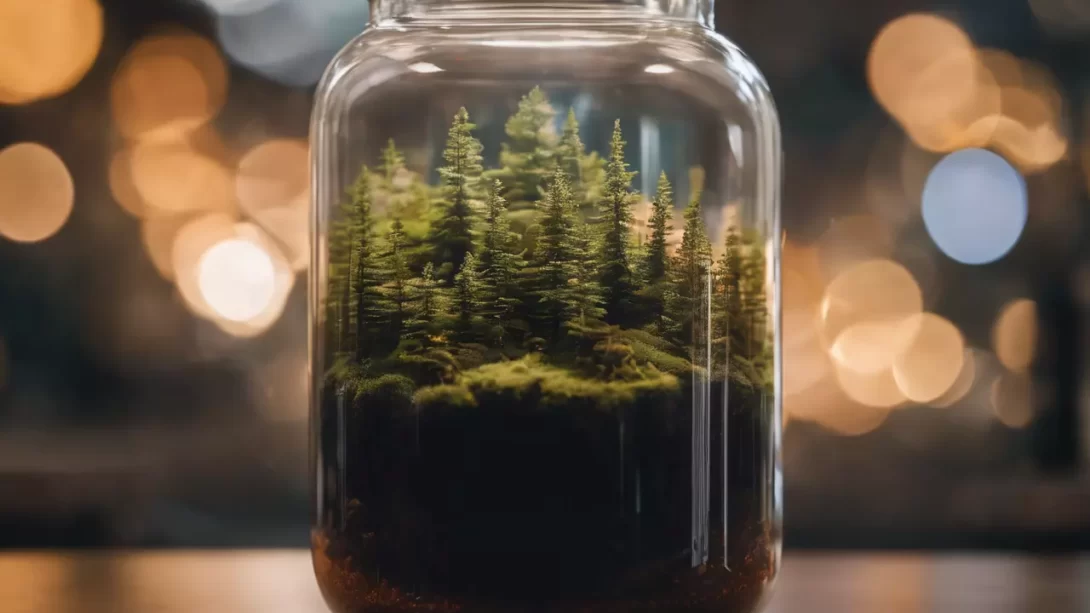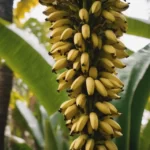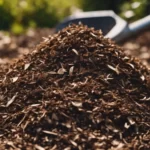An ecosystem in a jar, commonly known as a terrarium, is a fascinating way to create a self-sustaining miniature environment. This enclosed setup simulates natural processes, encapsulating elements of the larger ecosystem in a small, manageable space. It’s an educational and decorative project that brings a slice of nature into your home or office. By maintaining a delicate balance of soil, water, plants, and sometimes microorganisms, these jars demonstrate ecological principles such as the water cycle, photosynthesis, and inter-species relationships.
Choosing the Right Jar
Selecting an appropriate container is the first crucial step in creating your ecosystem. The jar’s size, shape, and material significantly impact the health and viability of the ecosystem. Glass jars are preferred for their transparency, allowing clear observation of the ecosystem’s dynamics. Size-wise, larger jars provide more room for diverse plant life and greater ecological complexity, but small jars can be equally effective and are more space-efficient. The shape of the jar, whether it’s wide and shallow or tall and narrow, will determine the types of plants that can thrive in it and how you’ll access the interior for maintenance.
Essential Components of Your Ecosystem
To begin, gather the essential materials: substrate, plants, and, if desired, microfauna like small insects or microorganisms. The substrate includes various layers that mimic the natural ground – a base layer for drainage, typically made of small stones or gravel, followed by activated charcoal to filter water and prevent mold, topped with a layer of soil suitable for the plants you’ve chosen. This setup ensures efficient water cycling and provides a foundation for plant growth.
The plants are the stars of your ecosystem. They should be selected based on the jar’s light conditions and space. Low-maintenance, shade-tolerant plants are often ideal, especially for closed terrariums. If you’re including microfauna, choose organisms that are beneficial for plant health and that can thrive in a confined environment. These could include small insects, worms, or even beneficial bacteria, which help break down organic matter and recycle nutrients.
Preparing Your Jar
The preparation of your jar is a critical step. Begin by thoroughly cleaning the jar with hot, soapy water to remove any residues or contaminants. Rinse it well to ensure no soap remains. Sterilizing the jar by baking it in the oven or using a mild bleach solution can further prevent the growth of unwanted mold or bacteria. Ensure the jar is completely dry before adding any materials, as excess moisture can upset the balance of your ecosystem.
Layering Your Ecosystem
Once your jar is prepared, start building the layers. First, add a layer of small stones or gravel at the bottom for drainage. This layer prevents water from pooling at the base, which can lead to root rot. Next, add a thin layer of activated charcoal. This layer acts as a filter, keeping the water clean and controlling odors. After the charcoal, add a layer of potting soil. The thickness of the soil layer depends on the types of plants you’re using but generally should be deep enough to allow roots to grow comfortably. Finally, consider a top layer of moss or small pebbles to maintain humidity and add an aesthetic touch.
Selecting and Planting Suitable Plants
Choosing the right plants for your ecosystem is vital. Consider the size of the jar, the amount of light it will receive, and the moisture level inside. Small, slow-growing plants that thrive in high humidity are usually best for closed terrariums. Ferns, mosses, and air plants are popular choices. For open terrariums, succulents and cacti are suitable as they require less humidity and more direct light.
When planting, gently place the plants in the soil, ensuring their roots are adequately covered. Arrange them in a way that allows each plant enough space to grow. Be mindful of how tall or wide the plants might become, and place taller plants towards the back or center. After planting, water the ecosystem lightly to settle the plants in, being careful not to overwater.
Adding Microfauna
Introducing microfauna, such as small insects or microorganisms, can add another layer of interest and functionality to your ecosystem jar. These tiny inhabitants help break down organic matter and can aid in plant health. Suitable microfauna for a jar ecosystem might include springtails or small isopods, which are non-invasive and beneficial for the soil. Be cautious in your selection and quantity, as an imbalance can harm the plants. It’s also vital to ensure that any fauna introduced are suitable for the closed environment and won’t outgrow the jar.
Maintenance and Observation
Maintaining your ecosystem jar involves regular observation and minimal intervention. Monitor the moisture levels; if the inside of the jar is constantly foggy, leave it open for a few hours to reduce humidity. Water sparingly, as the enclosed nature of the jar means it retains moisture well. Trim plants as needed to prevent overcrowding. If you notice a plant is not thriving, it’s better to remove it to prevent any potential spread of disease. Observing your ecosystem’s development is not only enjoyable but educational, providing insights into ecological balance and plant growth.
Troubleshooting Common Issues
Even with careful maintenance, you may encounter issues. Mold growth can be a common problem, often due to excessive moisture. Reduce watering and increase air circulation to combat this. If pests appear, identify them and apply appropriate organic pest control methods. Regularly inspect your plants for signs of distress, like yellowing or wilting, and adjust your care accordingly.
Occasionally, a plant or two might not survive. This is natural in the process of establishing a balanced ecosystem. Remove dead plants promptly to maintain the health of the remaining flora and fauna.
Concluding Thoughts
Creating and maintaining an ecosystem in a jar is a rewarding endeavor that blends gardening skills with ecological awareness. It allows for experimentation and learning in a unique, compact format. Whether you’re a seasoned gardener or a curious beginner, this project offers a delightful way to engage with nature on a miniature scale. Enjoy the process, and watch as your tiny ecosystem thrives, bringing a piece of the natural world into your personal space.



